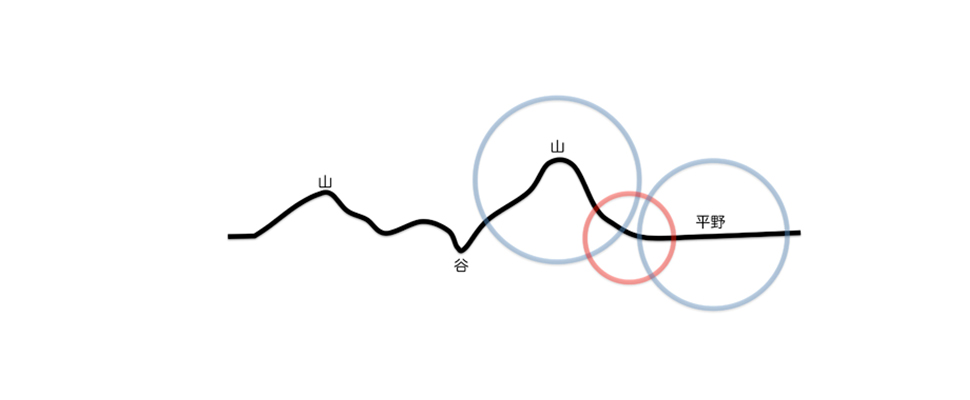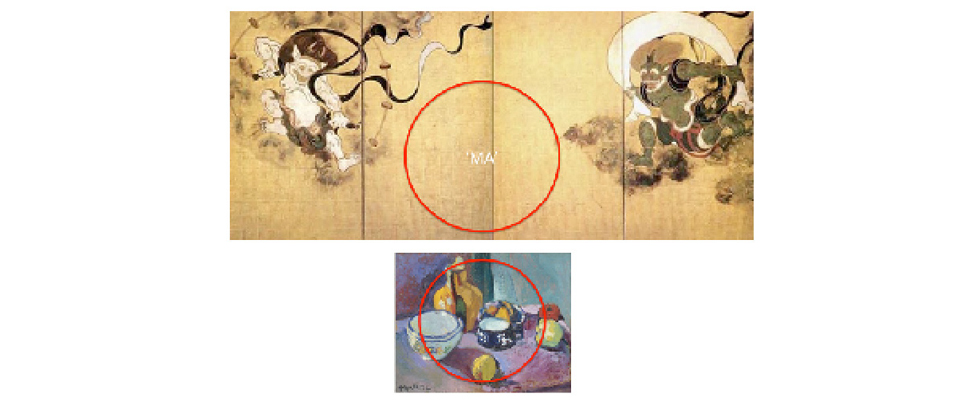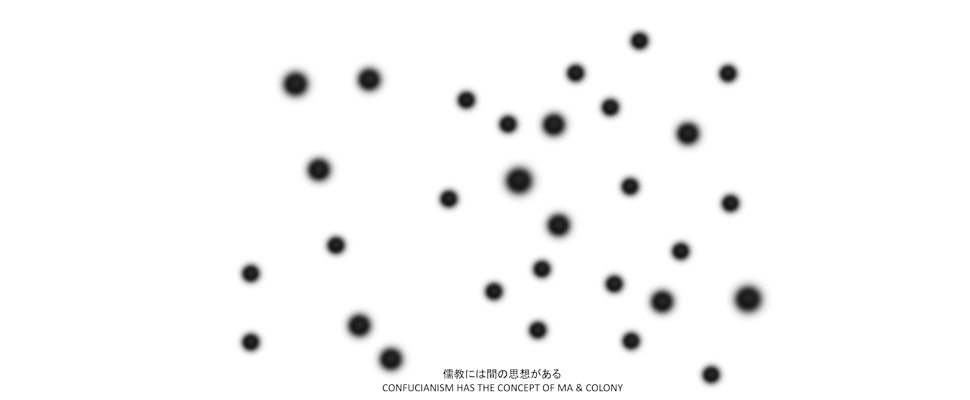
- OCD JOURNAL vol.4 no.1
- 2013.03.27

Abstract
The theme of this conference is “ WIND & EARTH”.
The meaning of wind is communication and the meaning of earth is culture of East Asia and each country.
_We wish to find Identity of each country and East Asia.
_We have 2 kinds of culture in this world. One is culture of Christianity and the other is of primitive concept that people think as a part of nature.
_Modern thinking came from Christianity who believes God.
The meaning of Nature is not same as nature of East Asian.
_European culture before Christianity is mostly same as East Asian culture. We think the concept of East Asia has possibilities to become the concept of the world.
_Leaving from Monotheism, believing Nature.
Not thinking Nature as ‘Nature without Human kind‘, believing as ‘A part of Nature‘.
It is East Asian concept.
Human is one of the animals

_We can see new world.
_We can find new harmonies between Human and Cosmos.
_The concept of “GROUP/COLONY” is one of most important one.
Concept of “GROUP/COLONY“ is from East Asian.
_We need not to have the Focus to make group and colony.
WIND IS MALE AND EARTH IS FEMALE.
WIND IS HUNTER AND EARTH IS FARMER.
WIND IS HUNTER AND EARTH IS FARMER.
WIND CARRY AND EARTH RAISE THE LIVES.
WIND IS COMMUNICATION AND EARTH IS GROUND.
WIND IS INVISIBLE AND EARTH IS UNCLEAR.
WIND IS GOING TO VANITY AND EARTH IS GOING TO DIVERSE.
SENSE OF NATURE _We don’t depend on God but Nature.
RELATION WITH OTHERS _We are living not for sin but shame.
SENSE OF MA _We realize ourselves with others. We have no concept of ‘the Self’.
“GROUP/COLONY“
_Group/Colony is the structure without infrastructure.
_Group/Colony is dynamic structure only by THE MINUTUNESS.
“GROUP/COLONY & CONFUCIANISM”
_五常/仁、義、礼、智、信
_五倫/父子、君臣、夫婦、長幼、朋友の関係
_THE CONFUCIANISM IS THE PRECEPTS OF CORRELATION
MYSELF _ OTHERS
OLD _ YOUNG GENERATION
MAN _ WOMAN
HUSBAND – WIFE
RICH _ POOR
HIGH _ LOW
RACE _ RACE
CULTURE _ CULTURE
_CONFUCIANISIM IS STRONGLY RELATED TO THE CONCEPT OF GROUP / COLONY
_’GROUP/COLONY’ is not TREE but FOREST.
_The concept of GROUP/COLONY is related to CONFUCIANISM.

仁_The love to the others.
義_The shame to the others.
礼_The model of social harmony
孝_The respect for parents.
忠_The honesty
_They are same sense of ‘GROUP/COLONY’.
_CONFUCIANISM is the CONCEPT of coexistence and COLONY is a STYLE of them.
“THE THEORY OF GROUP/COLONY“
1_ THE WHOLE IS IN THE MINUTENESS.
The minuteness is not in the whole.
2_ The MINUTENESS OCCURS FROM THE SENSE.
If you find the minuteness, it is come from a sense and meanings.
3_ A SENSE FROM A MINUTENESS FORMS ‘ MA ‘.
The minuteness having SENSE will gather and “MA“ will appear.
4_ “MA” IS FERTILE AND FULL OF SENSE.
”MA” is not void.
5_ DRAW A MINUTENESS TO REALIZE “MA”.
East Asian people likes the shadows of the light, the reflections of the light and they enjoy the moon. They enjoy everything indirectly.
6_ “MA” IS CONNECTER OF THE MINUTENESS.
The minuteness connected to the another minuteness to make the COLONY through “MA”.
7_THE CONFUCIANISM has the concept of MA & COLONY.
1_A sense grow up to the MINUTENESS/Furniture and interior space will appear.
2_A sense grow up to the MINUTENESS/House and Village will appear.
 Wind & Earth
Wind & Earth
Aesthetic Sense of East Asia
1. Wind & Earth = Natural Features / Raised in the earth of Asia and carried to the world by wind
The theme of the conference is “Wind and Earth”. That is, they are natural features. Wind refers to affects, racial migration or cultural diffusion while earth indicates the indigenization and penetration of the carried-in culture.
Understanding the identity of the East Asia and three countries in the region – China, Korea and Japan and clarifying the unique culture of each of them, I wish to expand the culture and aesthetic sense of East Asia to the world.
2. Two world views / based on the relation between human beings and nature

Figure 1: Christian world where human beings are in conflict with nature

Figure 2: East Asian world where human beings live in harmony with animals
There are two world views in the world today. One is the thought and aesthetic sense of East Asia, the root of which has deeply connected to the primitive view of nature. On the other hand, the culture of the West believes in God and tends to think human beings who were created by God are superior to nature based on Christian monotheism. The Western countries before Christianity had the similar primitive view of nature to that of the thought and aesthetic sense of East Asia indicating that the bases of the global civilizations were not so conflicting after all. The sense of order or harmony in the heart of human beings of the world can be found by exploring the sense of beauty grown in East Asia.
This sense of beauty of East Asia will become the fundamental thought that forms the world order after the modern times.
I intend to discover the true nature of human beings by researching the East Asian thought. The questions standing in the middle of such attempts are “what is nature?” and “what are human beings?”
It is for the entire people of the world to recover the thought of East Asia that considers nature as all things in the universe including the earth, the sky and human beings, opposing the thought based on monotheism that thinks nature as natural matters and all living things except human beings.
It is to build a world where people can change [ART / ARTFICIALITY] that is in conflict with [NATURE / NATURE] into [ARTFICIALITY / NATURE] that is mixed and harmonized with [NATURE / NATURE].
The desirable harmony between the universe and human beings is born from there.
We can find harmonies in a group. We want to carry the thought kept and raised in the earth of East Asia to the world through wind.
3. T he thought of Group in East Asia
3.1 Natural feelings / Dependence on nature where people are not in need of God
The most distinctive features of East Asian thought are that it does not require the one and only God and people consider themselves as a part of nature. In this environment, men can accept even life and death as a part of natural law that all things keep changing. Men are equal to elephants, cats, sheep, trees and gravel.
3.2 Sense of other people / Sense of being ashamed to other people, not the sin against God = Group and Confucianism
The social norms affecting the daily life of East Asian people are not the sin against God but the sense of being ashamed to other people. The sense of being ashamed to other people or their society may be considered as a way of life paying too much attention to other people without having faith or inner value system; however, it is not. East Asian people incorporate the consciousness of other people as their own to set the norms of daily life containing other people and the mankind inside them.
This thought is related to the idea of a group that consists of structures ensuring harmonies with other members of the group in a dynamic manner; for example, animals rather than that of the West where value standards lie in God who is in the outside of them.
3.3 Sense of space (MA) / The resonance with other people establishes oneself
= Lack of self
The thought of group in East Asia shows that human beings live in resonance with other people by nature from the beginning.
Zeami’(世阿弥)s [秘すれば花: It is a flower when it is hidden] indicates that a man can use his imagination and creative power to understand something that is hidden. The significance of communication is to interpret, resonate and create in a discontinuous manner by reader (observer) in his world, in which no “self” is required, rather than directly passing on something as it is. It is because oneself is recognized by others.
[Between-space (MA)] is the space open to the participation of readers.
4. Structure of Group
- Confucianism and Group
Confucianism is thought to have created harmonies between father and his son, king and his servant, husband and his wife, old and young and friends with In (benevolence), Ui (righteousness), Ye (propriety), Ji (Wisdom) and Sin (Trust); or In, Ye, Hyo (filial love) and Chung (Loyalty).
In modern society, [the relationship of a human being with other human beings] can simply classified as follows;
Co-existence of people (Oneself_Others)
Co-existence of generations (Old_Young)
Co-existence of different sexes (Male_Female)
Co-existence of a married couple (Husband_Wife)
Co-existence of different income classes (High income_Low income)
Co-existence of different positions in hierarchy (President_Employees)
Co-existence of different races (Japanese_Latino)
Co-existence of different cultures (Asian culture_African culture)
When a good relationship can be obtained in these relationships, a harmonized society can be established.
A beautiful society appears. We can think that Confucianism implies these relationships.
This thought is related to the concept of group.

Figure 3: Relationship of Christianity and Confucianism with other people
Confucianism is the thought of co-existence and group is the form of co-existence.

Figure 4: TREE <--> NETWORK
Figure 5: TREE <-->FOREST

Figure 6: Organization <--> Group
5. Principles of Group
5.1 The whole exists inside a particle.
Figure 7: A particle called myself_The mankind exists in an individual
Bergson defined time as a line.
Bachelard described time as the collection of points, each of which is called moment. The concept of time presented by Bachelard explained that time is made of the gathering of dots named moments and is equivalent to a group.
This idea suggests both past and future have been concentrated into time which is composed of moments. Since a moment contain both past and future at the same time, the group can have the feature of continuity. Since the mankind is concentrated in a human being, an individual can be connected with other individuals. The thought of a group indicates that minuteness contains the whole. The whole exists inside a particle.
Figure 8: The meanings of time of Bergson and Bachelard
5.2 Meanings become an article
An intensified meaning becomes a particle of concept. A mountain is the name given to the intensified meaning of “being high”. Therefore, the foot of a mountain begins losing the meaning of being high and eventually becomes something that does not belong to a mountain. The middle of a meaning becomes intensified while its surrounding becomes ambiguous.

Figure 9: Where the meaning is intensified becomes a concept
5.3 A particle releases energies and between-space (MA) comes into exist.
There are energies around a person, an article and a work. When energies gather, space (MA) comes into exist and a group is made.
When furniture gathers, it becomes interior design. When houses gather, it becomes a town.

Figure 10: Articles that emit energies generate spaces (MA) between the energies and the whole is unified
5.4 Between-space (MA) is a space in which is fully filled.
Although nothing has been drawn and exist between-space (MA), still it is a solid space.

Figure 11: In case of a painting in Western culture, the background of the painting is just the background and a void space
In case of an article and between-space (MA) in East Asian culture, an article emits energies and creates between-space (MA). The between-space (MA) is a solid space.

Figure 12: A number of pine trees are seen in a place where nothing exist. It is the effect of between-space (MA).
5. 5 Articles are drawn in order to express between-space (MA).
In case of Western painting, the object to be drawn tends to be put in the middle. However, Tawaraya Sōtatsu painted the god of wind and the god of thunder on both sides from the center which is left blank.
What he really wanted to express was the between-space (MA). In order to achieve this, he drew the god of wind and the god of thunder.
The area of the blank, i.e. [the between-space (MA)], provides a room for watchers to freely imagine.
This area is reserved for the participation of watchers.
In East Asia, a watcher becomes an expresser as well; an expresser and a watcher are connected via between-space (MA).

Figure 13: Differences between the paintings of the West and East Asia
5. 6 Between-space (MA) connects groups
Confucianism explains the thought of between-space (MA). When people gather and space is filled with consideration, respect, affection, etc, a community is established. When houses gather and space is filled, a village is made.

Figure 14: Images of a village or group
6. Aesthetic sense and thought of East Asia
WIND & EARTH
NATURE
GROUP/COLONY
Space (between-space)/MA
CONFUCIANISM
Nietzsche said “God is dead”. However, for us, there was no god from the beginning.
If God is an object that we consider with reverent respect, it would be nature for us who live in the East.
However, we do not consider nature as an object.
Nature is literally “being as it is”, which includes ourselves.
Reverent mind indicates the providence of the universe that includes ourselves.
People living in countries in the East consider themselves as a part of nature, sincerely believing that they are equal to birds, cats, trees and gravel.
They live caring about and fighting each other like birds and fish.
Human beings have managed to build various forms of wisdom to coexist based on knowledge they have acquired. It is a religion, composition and law. Confucianism or Buddhism is an example of such wisdom.
However, people have become arrogant. They began to think they were special beings and started obtaining means for life by changing nature. As a result of that, a number of species of animals have become extinct, the ecological harmony of earth has been destroyed and polluted air has threatened the continuity of life.
What Confucianism and Buddhism imply is the thought of the coexistence of human beings.
It is an age when we seek for the coexistence with living things and, before that, the coexistence with nature based on this thought.
The Oriental thought including Confucianism and Buddhism which are hiding a modest attitude toward nature has the power to lead the world in this new age.
I want to raise the Oriental thought that has been cultivated by accepting wind from the world in the land of the East and let wind carry it to the thought of the world where it takes root.
바람과 흙 = 풍토
동아시아의 문화와 미의식
1. <바람과 흙 = 풍토 / 아시아의 흙에서 키우고, 바람에 실어 세계로 나르다.>
컨퍼런스의 테마는 <바람과 흙>이다. 바꿔 읽으면 <풍토>이며, <바람>이란 영향, 민족의 이동 또는 문화의 전파를, <흙>이란 흘러 들어 온 문화의 토착화와 침투를 의미한다.
동아시아의 중국, 한국, 일본이라고 하는 3개의 나라의 정체성(아이덴티티)과 동아시아의 정체성을 이해하고 각각의 문화를 분명히 하면서, 세계에 <동아시아의 문화와 미의식>을 넓혀 나가고 싶다.
2. 세계의 두 개의 세계관 / 인간과 자연과의 관계로부터
Figure 1 사람은 자연과 대립적인 관계에 있는 기독교적 세계
Figure 2 사람은 동물들과 대등하게 살아 가고 있는 동아시아적 세계
현재의 세계에는 두 개의 세계관이 있다. 하나는 동아시아를 대표하는 동양의 사상과 미의식으로, 그 근원은 원시적인 자연관이며, 이에 비해 서양은 기독교를 대표로 하는 유일신적 세계관이 지배적으로, 신을 믿으며 신이 창조한 인간을 자연보다 상위의 존재라고 생각한다.
기독교 이전의 서양 국가들에서도 기독교 이전에는 동아시아의 사상과 미의식에 공통적인 원시적 자연관이 존재하였으며, 세계의 문명의 근본은 그다지 대립적이지 않았던 것으로 생각된다.
동아시아가 키워 온 미의식을 탐색함으로써 세계의 모든 인간의 근저에 있는 질서 의식이나 조화 의식을 발견할 수 있을 것이다.
이 동아시아의 미의식은 근대 이후의 세계 질서를 형성하는 기본적인 사상이 될 것이다. 동아시아의 사상을 탐구함으로써 본래의 인간의 모습을 찾고자 한다. 그 근원에 있는 물음은 <자연이란 무엇인가?>이며 <인간이란 무엇인가?>이다.
자연을 <인간을 제외한 자연물 및 생물 전반>이라고 생각하는 유일신적 사상을 뒤집어, <사람을 포함한 천지/우주 만물>이라고 생각하는 동아시아의 사상을 세계의 사람들이 회복하는 것이다.
<NATURE/자연>에 대립되는 <ART/인위>를 <자연/NATURE>과 융화되고 조화를 이루는 <인위/NATURE>로 바꿔 읽는 세계를 만드는 것이다.
우주와 인간과의 바람직한 조화가 거기에서 태어난다. <무리>의 사상 속에서 그 일단을 발견할 수 있다. 그리고 동아시아의 <토양>에서 지키고 키워 온 사상을 <바람>에 실어 세계로 나르고 싶다.
3. 동아시아의 <무리>의 사상
3.1 자연스러운 느낌 / 신을 필요로 하지 않는 자연에 대한 의존심
동아시아 사상의 가장 현저한 특징은 <유일신인 신을 필요로 하지 않는 것>이며, <자기 자신을 자연의 일부로 생각하는 것>이다. 여기서는 삶도 죽음도 생생유전하는(만물이 끊임없이 변해가는) 자연의 이치의 일부라고 사람은 받아 들일 수 있다. 인간은 코끼리나 고양이 또는 양, 수목이나 자갈과 대등한 존재이다.
3.2 다른 사람에 대한 감각 / 신에 대한 죄가 아니라, 다른 사람에 대한 부끄러움의 감각 = 무리와 유교
동아시아의 생활 규범은 <신에 대한 죄>가 아니라, <다른 사람에 대한 부끄러움>으로 받아 들여지고 있다. 사회나 다른 사람에 대한 부끄러움을 의식하는 것은 <신념이나 내적 가치 체계를 가지지 않고 사람에 대해 신경 쓰면서 살고 있다>라고 생각되기 쉽지만, 그렇지 않다. 동아시아 사람들은 <자기 안에 다른 사람과 인류를 담고>있으며 다른 사람의 의식을 자기의 것으로 만들어 생활의 규범으로 삼고 있는 것이다. 이 사상은<신이라고 하는 자기 외부에 가치 기준을 두는 서양>에 비해 <타자와의 다이나믹한 조화의 구조를 가지는 동물 등에 보여지는 무리의 사상>과 관계가 있다.
3.3 공간(MA)의 감각 / 다른 사람과의 공명에 의해서 자기가 성립된다. = 자아의 결핍
동아시아의 <무리>의 사상은 <인간은 처음부터 본성으로서 다른 사람과 공명하며 살고 있다>는 것을 의미한다.
제아미(世阿弥)의 <감추면 꽃>이란 <숨기면 사람은 상상력을 동원해서 자신의 창조성을 발휘해 자신답게 이해한다>는 것을 의미한다. 커뮤니케이션이란 <있는 그대로 올바르게 전하는 것>이 아니고, 독자(관찰자)가 자신의 세계에서 해석해 공명하면서 비연속적으로 창작하는 것이다. 여기서는 <자아>는 필요하지 않다. 자기는 다른 사람에 의해서 인식되기 때문이다. <사이(MA)>란 이 독자의 참여 공간을 말한다.
4. 무리의 구조
- 유교와 무리
유교는 부자, 군신, 부부, 장유, 붕우의 5개의 관계에 인, 의, 예, 지, 신(인, 예, 효, 충이라고도 한다)에 의해서 조화를 만들고자 하는 사상이다.
현대 사회에서는 <인간과 그 밖의 다른 인간의 관계>는 다음과 같이 간략하게 만들어 분류, 정리할 수 있다.
타자간 공존 (자기_타자)
세대간 공존 (연장자_젊은이)
이성 공존 (남_녀)
부부 공존 (남편_아내)
소득 계층의 공존 (적은 소득_낮은 소득)
권력 상하의 공존 (사장_평사원)
민족간 공존 (일본인_라틴인)
이문화 공존 (아시아_아프리카)
이러한 관계들이 양호한 관계를 얻을 수 있다면 조화를 이룬 사회가 만들어진다. 아름다운 사회가 생겨난다. 이 관계를 유교는 시사하고 있다고 생각할 수 있다.
이 사상은 <무리>의 사상에 연결되어 있다.
Figure 3 기독교의 사람과의 관계와 유교의 사람과의 관계
<유교>는 공존의 사상이며, <무리>란 공존의 모습이다.
Figure 4 TREE/트리 <--> NETWORK/네트워크
Figure 5 TREE/수목 <--> FOREST/숲
Figure 6 조직 <--> 무리
5. 무리의 원리
5.1 입자 안에 총체가 있다
베르그송(Bergson)는 시간을 선이라고 하였다. 바슈라르(Bachelard)는 시간을 순간이라고 하는 점의 집합이라고 하였다. 이 가스톤 바슈라르의 시간에 대한 생각은 시간은 순간이라고 하는 점들이 모인 것으로, <무리>라고 하였다.
이 사고 방식은 순간이라고 하는 시간 안에 과거도 미래도 농축되어 있음을 의미한다. 순간에 과거도 미래도 있기 때문에 그 무리는 연속성을 지닐 수 가 있는 것이다. 한 사람 안에 인류가 농축되어 있기 때문에, 사람은 다른 사람과 연결될 수 있다. <무리>의 사상은 <미세한 것>이 전체를 포함하고 있음을 의미한다. 입자 안에 총체가 있다.
Figure 7 나라고 하는 입자_개인 안에 인류가 있다
Figure 8 베르그송(Bergson)과 바슈라르(Bachelard)의 시간
5.2 의미가 입자가 되다.
의미의 고조가 개념의 입자가 된다. 산은 <높다>라고 하는 의미가 고조된 것에 붙여진 명칭이며, 따라서 높다고 하는 의미가 희박해지는 산 기슭은 점차 애매해져서 이윽고 더 이상 산이 아닌 것이 된다. 의미는 중심이 고조되고 주변은 애매해진다.
Figure 9 의미의 고조가 있는 곳이 개념이 된다
5.3 입자는 기를 발산하여, 사이(MA)가 생긴다.
사람도 물건도 일도 그 주변에 기운이 있다. 기운은 모이면 공간(MA)이 생겨 <무리>를 만든다. 가구는 모여 인테리어가 되고, 집은 모여 취락이 생겨난다.
Figure 10 기를 발산하는 물건이 그 사이(MA)에 공간(MA)을 만들어 전체가 통일된다
5.4 사이((MA)는 풍성하게 찬 공간이다.
사이(MA)는 아무 것도 그려져 있지 않고 아무 것도 없지만 충실한 공간이다.
Figure 11 서양에서의 바탕과 그림에서는 바탕은 그림의 단순한 배경에 지나지 않는다. 보이드(void)한 공간
동아시아의 물건과 공간(MA)에서는 물건은 기운을 발산해서 공간(MA)을 형성한다. 사이(MA)는 충실한 공간
Figure 12 아무 것도 없는 곳에 여러 개의 소나무가 보인다. 공간(MA)의 효과이다
5.5 공간(MA)을 표현하기 위해 입자를 그리다.
서양 회화에서는 그리는 대상은 회화의 중심에 표현된다. 다와라야 소타쓰(俵屋宗達) 의 바람의 신 천둥의 신에서는 회화의 중심 공백에서 양쪽으로 바람의 신과 천둥의 신이 그려져 있다. 공간(MA)이야말로 표현하고 싶은 것이며, 이를 위해 바람의 신과 천둥의 신이 그려져 있다. 이 공백 부분, 즉 <공간(MA)>에 감상자의 자유로운 발상이 허용된다. 감상자가 참여하기 위한 공간이 <사이(MA)>이다.
동아시아에서는 감상자도 또한 표현자이며, 표현자와 감상자는 사이((MA)에 의해 연결된다.
Figure 13 서양의 회화와 동아시아의 회화의 차이
5. 6 공간(MA)이 무리를 잇고 있다.
유교에는 공간(MA) 의 사상이 있다. 사람이 모여, 공간(배려-경의-애정 등)을 개재시켜 커뮤니티를 만들어 낸다. 주택이 모여 공간(MA)을 개재시켜 취락을 만들어 낸다.
Figure 14 취락, 혹은 무리의 영상
6. 동아시아의 미의식과 사상
바람_흙 / WIND & EARTH
자연 / NATURE
무리 / GROUP/COLONY
공간(사이)/MA
유교 / CONFUCIANISM
니체는 <신은 죽었다>라고 했다. 그러나 우리에게는 처음부터 신은 없다.
경건한 마음을 지니는 대상을 신이라고 한다면 동양의 우리에게는 <자연>이 여기에 해당할 것이다.
그러나 우리는 자연을 대상으로는 보지 않는다.
자연은 문자 그대로 <있는 그대로>, 자기 자신도 포함하는 존재이다. 경건한 마음은 자신도 포함시킨 우주의 섭리를 말한다.
동쪽의 나라에서는 인간은 자신을 자연의 일부로 생각한다. 새나 고양이나 나무나 자갈과 같다고 진심으로 생각하고 있다.
새처럼, 물고기처럼 사람은 서로 배려하면서 때로는 싸우면서 살고 있다.
인간은 지식을 손에 넣어, 공존을 위한 여러 가지 지혜를 도출해 냈다. 그것은 종교이기도 했고 작법이기도 했고 법률이기도 했다. 유교도 불교도 그러한 지혜의 하나이다.
그러나 사람들은 불손한 마음을 갖기 시작했다. 인간은 특수한 존재라고 생각하기 시작했다. 자연을 가공하여 인간에게 도움이 되도록 하려고 생각하기 시작했다. 그리고 많은 종의 동물은 멸종했으며 지구의 생태학적 조화는 무너졌고, 공기는 오염되어 생명의 존속을 위태롭게 만들었다.
유교나 불교 등이 시사하는 것은 인간과 인간의 공존의 사상이다. 이 사상에 따라 생물과의 공존과 그리고 그 이전에 자연과의 공존을 모색하는 시대가 되었다.
자연에 대한 겸허함을 감춘 불교나 유교 등의 동양의 사상은 이 새로운 시대에 세계의 지도자적 역할을 완수할 힘을 가지고 있다.
세계로부터의 바람을 받아 들여 배양한 동양의 사상을 동양의 흙에서 키워 내, 바람에 실어 세계의 사상에 뿌리 내리게 하고 싶다.
- JOURNAL
- CONFERENCE
- WORKSHOP
- EXHIBITION
- PUBLICATION
- OD BRAND
- ACTIVITY
- NEWS







